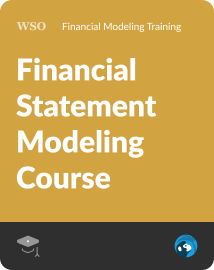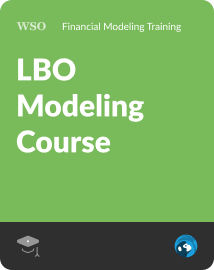Financial Model Skills
Helps in making future projections for the well-being of the business.
What Are Financial Model Skills?
The financial models make predictions on how well a company will do. It integrates accounting, financial, and business data to give insight into a company and its prospects. In other words, it helps in making future projections for the well-being of the business.

Usually, these models are used in business decision-making. For instance, while choosing investments for a public or private company. Another example is when a company wants to raise money for its business by issuing debt or stock.
A financial model is needed to value the securities. It is also used in corporate transactions like mergers, acquisitions, and divestitures.
The process of using numbers to explain the company's past, present, and future operations is known as financial modeling. The goal of these models is to serve as a tool for decision-making.
Financial analysts use financial models to explain and forecast the consequences of events on a company's stock, ranging from internal aspects, such as a change in business model or strategy, to external ones, such as a shift in economic policy or regulation.

The models are employed when attempting to value a company or contrasting it with others in the same sector. They are also employed in strategic planning to evaluate potential outcomes, determine project costs, establish budgets, and distribute resources throughout the organization.
Discounted cash flow analysis, sensitivity analysis, and in-depth evaluation are a few examples of these models. Managers and company development professionals apply these approaches to access mergers and acquisitions.
Apart from the uses mentioned above, financial model concepts
- May help business owners and entrepreneurs make well-informed decisions that could impact a company's future performance.
- Are used by Real estate developers to evaluate the feasibility of a new venture.
- Are used by people to manage their finances.
- Are used by Governments routinely to access, analyze, and estimate future financial performance.
Key Takeaways
- The financial model predicts a company's future financial performance. Calculating the effects of potential events or actions may be done using a spreadsheet summary of a company's costs and profits.
- It combines accounting, financial, and business data to paint an accurate image of a company and make future projections.
- Financial models are used when seeking to appraise a firm or compare it to others in the same industry. Additionally, they are used in strategic planning to assess prospective results, estimate project expenses, create budgets, and allocate resources throughout the firm.
- If you want to connect and get along with others, whether in a group or on your own, you need to have the character traits known as soft skills. Building trustworthy relationships, leading teams, and commanding respect are all made easier with the help of these abilities.
- Soft skills are crucial to your professional, company, and personal success.
- Excluding presenting abilities from the criteria of these modeling skills would not be suitable. Legibility, expressiveness, visual hierarchy, consistency, uniqueness, and intentionality are the six components that make up a powerful presentation.
- These models are used by buy/sell-side research analysts, management analysts, and credit analysts to determine a buy or sell rating for a certain investment. In addition, for various reasons, management uses financial models to establish internal budgets.
Required Financial Model Skills
Accounting and finance expertise is the topmost required talents for financial modeling. Although anybody interested is welcome to apply for this position, students with a background in accounting or finance, aspiring MBA graduates, and working professionals are the best candidates.

Let's look at some of the necessary skills.
Financial statements are the best way to evaluate a company's financial future, whether it be your employer or potential investment. In addition, these financial documents offer a plethora of information about the organization's budget, strategy, and decision-making.
Analyzing financial statements through excel is the first step in financial modeling.
Therefore, we should understand what the company's financial data is trying to tell us. You should get familiar with different financial statements when comprehending essential skills. The most important types are
- Balance Sheets: These records provide information on a company's book value and the sum of its assets, liabilities, and equity.
- Income Statements: These records show how much a company earned and spent within a specific reporting period.
- Cash flow statements: A type of financial statement that shows how a company's activities, investments, and financing affect its cash flow.
- Annual reports: These reports measure a company's progress toward its goals and objectives and reflect its financial performance for the previous year.
You must evaluate financial statements to get the most out of them.

After a thorough analysis, the data may be utilized to develop crucial ratios or other financial indicators, such as working capital, debt-to-equity ratio, and inventory turnover, that give a complete picture of a company's finances.
In most businesses, the executive suite and accounting department members prepare financial statements. But those who own their businesses or operate in a startup setting can be in charge of creating financial statements.
The information in each financial statement should be well understood by everyone working in management or entrepreneurship, and they must know how to analyze and interpret it.
The practice of estimating a company's future profits, cash flow, and spending is known as financial forecasting. Businesses use forecasts to develop upcoming budgets and strategies and to inform clients about financial reporting.
A company's functioning capacity can be severely restricted by a forecasting error or failure to consider risk. Therefore, accurately predicting revenue and cash flow and forecasting financial statements are crucial business abilities.
NOTE
Analyzing financial statements play a crucial role in financial modeling. This skill is usually practiced by those with finance, accounting, and potential MBA graduates.
In business, return on investment can relate to a single project, like the launch of a product, and refer to the entirety of an organization's operations. A few words to remember:
- Return on invested capital, a crucial performance indicator, assesses how well a firm allocates resources to profitable ventures.
- The calculation known as net present value is used to estimate how much the future cash flows from a project or effort would be worth in today's currency.
- Internal rate of return is a metric used to assess a potential investment's profitability for a business.
You work with enormous amounts of data while reviewing or creating financial records, determining the return on investment, or making future projections. Such data must be understood, evaluated, and synthesized before being used. Critical business decisions and activities may then be based on the data.
Accounting skills and analysis
Although creating a financial model requires a bit of accounting, a diploma in the field is not necessary to build the model. Instead, general accounting knowledge and a good understanding of the field will do the job.

Professionals in different fields, such as equity research, finance, corporate development, and accounting, can create financial models.
Furthermore, understanding Generally Accepted Accounting Principles (GAAP), i.e., a list of procedures and rules set in place by the Financial Accounting Standards Board (FASB), is beneficial when creating your financial model.
One should be knowledgeable in
- Revenue recognition
- Understanding income statements
- Understanding balance sheets
- Understanding Cash flow statements
- The difference between accrual and cash accounting
In financial modeling, understanding the three financial statements is crucial. These statements reflect a company's expenses, debt, cash flow, and revenue over time.
Essentially, these statements are important skills to learn when creating a financial model because you can estimate the growth of a business, margins, and cash flow metrics.
To clearly understand where your business stands, it is important to understand these basic accounting principles, even if you are not building the financial model on your own. By doing this, you can speak on the financial model to potential shareholders and consultants.
Therefore, using accounting skills will make the process of developing your financial model quick and simple because one with prior knowledge can easily make sense of the templates included in the model.
Expertise with Spreadsheets
The spreadsheet-based study of a company's expenses and earnings makes it possible to calculate the effects of certain decisions made by the company.

Utilizing formulae, Visual Basic for Applications programming, etc., are examples of advanced Excel skills.
Specialists use Excel for more difficult tasks like data analytics and simulation. Here are a few practical advanced talents. Let's examine the Excel-related modeling abilities that many professionals employ.
- The table lookup function VLOOKUP (vertical lookup) pulls information from a specified column. Essentially, it extracts data vertically from a table using a lookup value. Being able to merge many pieces of data into one is an important skill to have.
- An index match combines the Index and Match functions in EXCEL. The former retrieves the content of a cell in a list or table, and the latter gives the cell's row or column position. A formula can become dynamic when these functions are connected.
- Next, conditional formatting is a great method for creating spreadsheets because it makes it simple to rapidly add a layer of visual analysis to a data collection.
- Additionally, it may be used to produce complex tools like heat maps and Harvey balls. A heat map is a visual representation of data that frequently uses a warm-to-cool color range to highlight some values as being larger or lower than others.
- A pivot table is a useful tool when using Excel to produce reports with plenty of data. With the exception that you may view the same data from several angles, a pivot table is relatively equivalent to a regular report table.
- Using pivot tables, a user may filter data to include or exclude groups, make visualizations, and categorize data into several categories.
- When activated, a Macro program performs one or more actions. Macros are created using the computer language VBA (Visual Basic for Applications), which is saved in modules. However, only some Excel users have this knowledge due to its complexity.
NOTE
One must have a solid understanding of VBA to use a macro. To automate procedures, utilize VBA macros.
Making a mathematical model to describe the properties of a system is frequently the first step in a simulation. Excel may be used to simulate by someone with considerable skill, even though specialist simulation software applications are now readily available.
Soft Skills
Soft skills are character attributes necessary for interacting and cooperating with people in a team or individually. Building trust and reliability, leading teams, and establishing interpersonal connections are all made simpler by these skills.

They are essential for professional and personal achievements and the success of your business. When discussing financial modeling abilities, soft skills are essential components. For example, you may negotiate a revised contract at work, present your novel concept to coworkers, etc.
Soft skills are often used at work; thus, honing them will increase your income and hasten your professional advancement. Soft talents are useful in both our personal and professional lives.
Soft skills like communication are utilized to form social groups and connect with possible partners outside the office. For example, you may negotiate the cost of remodeling your new house or give up your weekend to instruct your neighbors' children.
Logical thinking skills enable you to approach situations rationally. They allow you to respond to any issues that emerge with well-considered solutions. They also enable you to reach judgments that most others consider sensible.
If you are a skilled researcher, you will look for and locate information that will help you convey understanding about your chosen subject. Your judgments will be more accurate with the essential information you know about a subject. Therefore, you must choose dependable and relevant sources.
You may come up with new solutions to problems with your outside-the-box and flexible thinking when coming up with ideas and potential answers, leading towards the propensity to approach problems differently than others.
NOTE
If you're strong at arithmetic, you can manipulate numbers and represent mathematical ideas using symbols. All businesses are based on numbers, indicating that you should be strong in Data processing, and it must be possible in your brain.
What are Presentation Skills?
It would not be appropriate to exclude presentation skills from the analysis of these modeling skills. The six elements that form a strong presentation are legibility, expressiveness, visual hierarchy, consistency, distinctiveness, and intentionality.

Everything in your presentation needs to be readable. Your presentations won't be as successful as they should be if anything is hard to read or understand.
Presentations are easily conveyed when the audience can clearly understand the meaning behind the data and statistics in the presentation. This is done best by structuring in an order that is simple to understand.
The order in which the audience views your presentation will determine how well it goes. This is especially true when designing pie charts and flow diagrams because the main objective is to produce a flow that users of these platforms may explore.
The message you meant to convey through the presentation might not be communicated appropriately if the hierarchy is poorly performed since it will be difficult to understand.
The main principle of a powerful presentation is consistency. If concepts and the underlying message are difficult to understand and comprehend, the presentation's main objective will be unsuccessful owing to a lack of consistency.
To identify your credibility and reputation, ensure each presentation is unique. Every design decision must be deliberate, which requires careful consideration and several iterations of the design's ultimate result before it is accepted.
Text, color, and object placement are all decisions that require careful consideration. Intentionality in presentations shows that you are knowledgeable and can persuade listeners to consider your points of view.









or Want to Sign up with your social account?